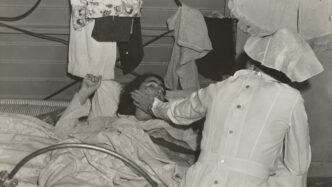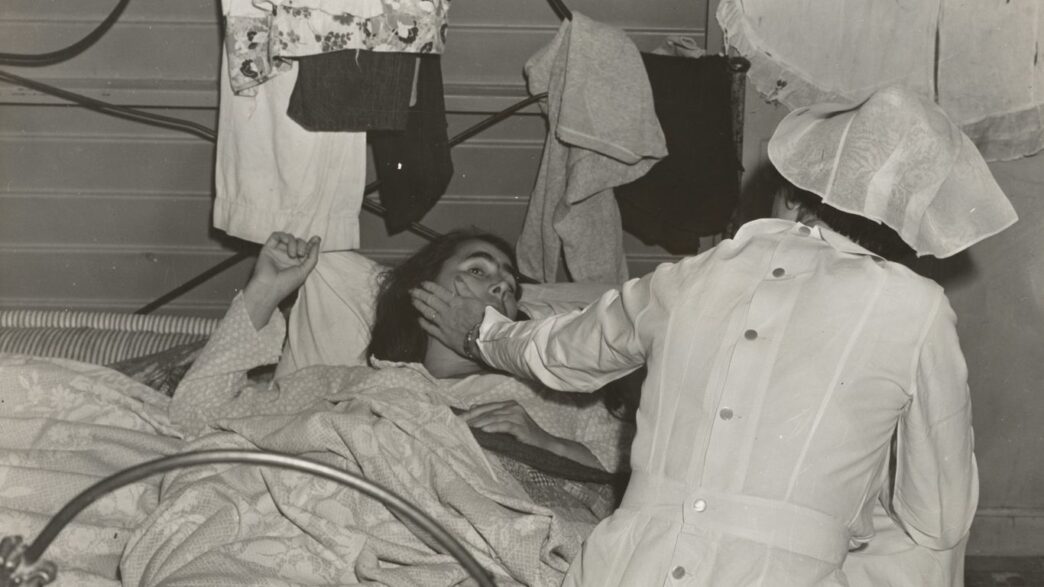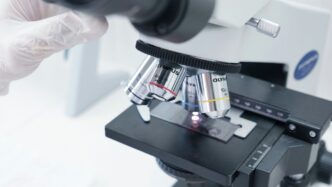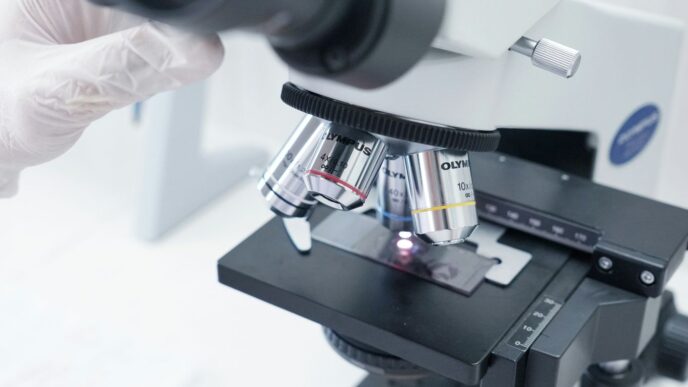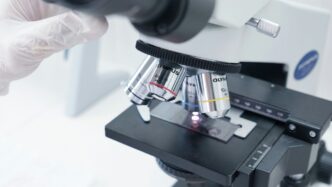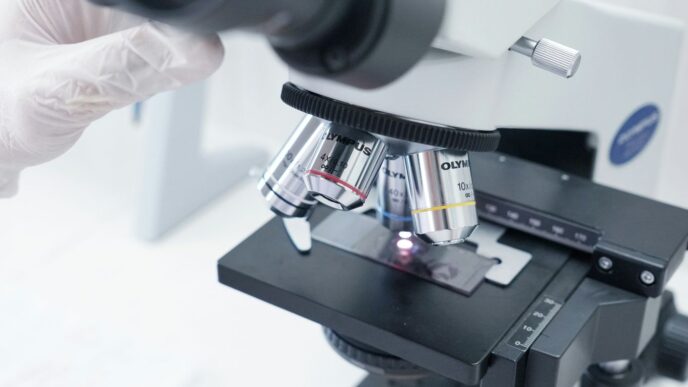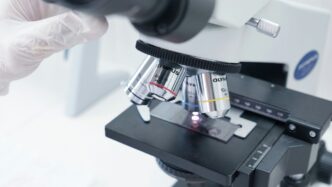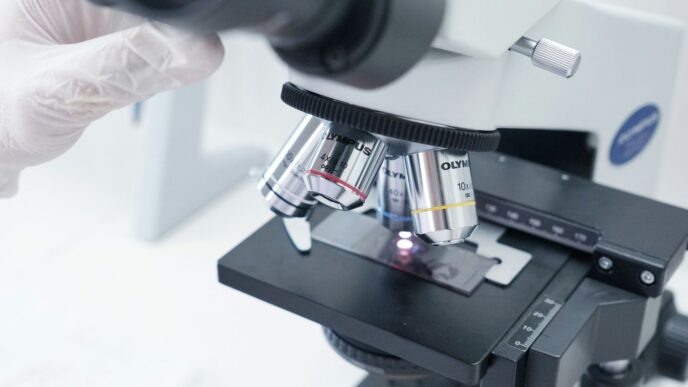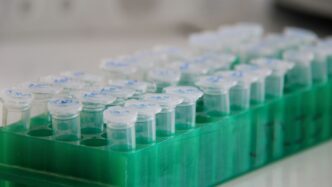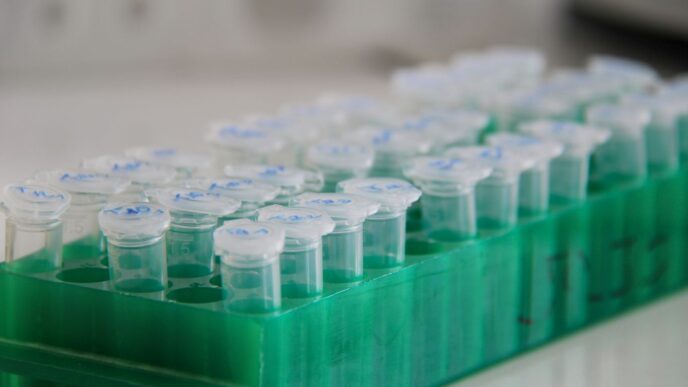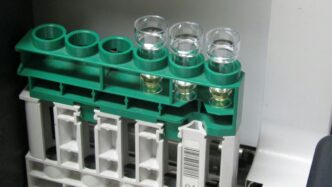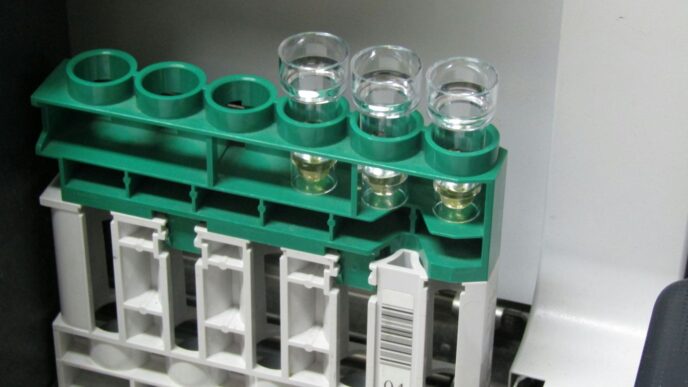So, Johnson & Johnson has this thing called the MONARCH platform, and it’s kind of a big deal for looking inside the lungs. It’s a robotic system that helps doctors do bronchoscopies, which is basically a way to see inside your airways. The whole point is to find lung problems, especially cancer, earlier and more accurately. It seems like it can get to places in the lungs that are usually really hard to reach, which is pretty cool.
Key Takeaways
- The jnj monarch platform is a robotic system designed to improve bronchoscopy procedures.
- It offers better access to the outer parts of the lung, helping doctors find hard-to-reach nodules.
- Studies, like the BENEFIT trial, show the jnj monarch platform is safe and effective for diagnosing lung issues.
- The platform uses AI and machine learning to guide doctors more precisely during procedures.
- The jnj monarch technology has received FDA Breakthrough Device Designation, highlighting its potential to change lung cancer treatment.
Revolutionizing Bronchoscopy With The JNJ MONARCH Platform
A First-Of-Its-Kind Robotic Technology
Okay, so imagine trying to get a really good look at tiny spots deep inside someone’s lungs. For years, doctors have used bronchoscopes, which are basically long, flexible tubes. They’re good, but they have their limits, especially when trying to reach the very edges of the lungs where suspicious nodules often hide. That’s where the JNJ MONARCH platform comes in. It’s a robotic system designed to make bronchoscopy much more capable. This isn’t just a slightly better tube; it’s a whole new way of doing things. It uses robotics to give doctors more control and reach than ever before.
Enhanced Reach Into The Periphery Of The Lung
One of the biggest challenges in lung diagnostics is getting to those small nodules way out in the outer parts of the lung. Traditional bronchoscopes can struggle to get there accurately. The MONARCH platform, however, is built to extend that reach. Think of it like having a remote-controlled probe that can snake its way through the airways with much greater precision. This improved access means doctors can investigate areas that were previously very difficult, if not impossible, to biopsy.
Continuous Real-Time Vision, Precision, And Control
What really sets the MONARCH system apart is how it combines vision, precision, and control. Doctors get a continuous view of where the instrument is going, in real-time. This isn’t like just poking around blindly. The robotic controls allow for very fine movements, almost like a surgeon’s hand but inside the lung. This combination helps doctors pinpoint suspicious areas more accurately and take tissue samples with greater confidence. It’s about making the procedure safer and more effective for the patient.
Clinical Evidence Supporting The JNJ MONARCH Platform
Results From The BENEFIT Study
The BENEFIT study was a big deal – it was the first prospective, multicenter look at robotic bronchoscopy. They published the results in CHEST, which is a pretty respected journal. Basically, they wanted to see how safe and doable the MONARCH Platform was for finding lung nodules, especially those tricky ones way out in the lungs. Fifty-five patients were part of this study, spread across five major hospitals in the U.S. The system uses a mix of seeing things directly, guided navigation, and ultrasound to pinpoint these nodules. The study showed that the MONARCH Platform was safe, with only a few minor complications like pneumothorax, and no serious bad events. Most of the time, they could get to where they planned to go.
Diagnostic Yield And Safety Data
When it came to actually getting a diagnosis, the BENEFIT study reported an overall diagnostic yield of 74.1%. That’s a pretty good number, especially considering they used strict definitions to make sure it was accurate. For nodules that were harder to reach, located outside the main airways, the yield was around 70%. This is important because it’s a lot better than what’s been reported with older, non-robotic methods, which were more like 30-40% for those same hard-to-reach spots.
Here’s a quick look at some of the safety numbers from the BENEFIT study:
- Pneumothorax (collapsed lung): Occurred in 3.7% of procedures (2 out of 54 patients).
- Chest tube placement required: Needed in 1.9% of procedures (1 out of 54 patients).
- Serious adverse events: None reported beyond the pneumothorax.
- Target localization success: The system reached and pinpointed the target area in 96.2% of cases.
The strict way they defined ‘diagnostic yield’ in this study is a big plus. It means the 74.1% figure is more reliable than in some past studies where definitions varied. This careful approach helps set a higher standard for future research.
Comparison To Non-Robotic Technologies
What really stands out is how the MONARCH Platform stacks up against traditional bronchoscopy. For those small nodules tucked away in the outer parts of the lung, which are often the hardest to biopsy, the robotic system showed a significantly higher success rate. While older methods might only get a diagnosis 30-40% of the time in these difficult cases, the BENEFIT study saw around 70% with MONARCH. This improvement means doctors can get the information they need more often, which is a big step forward for diagnosing lung conditions early.
The Role Of AI And Machine Learning In The JNJ MONARCH

AI-Powered Navigation For Improved Accuracy
Artificial intelligence (AI) and machine learning (ML) are really changing how the JNJ MONARCH platform works. Think of it like giving the robot a super-smart brain for guiding itself. These smart algorithms help doctors steer the bronchoscope more precisely, especially when trying to find tiny spots in the lungs that might be tumors. This means getting a more accurate diagnosis right from the start, which is a big deal for treating lung cancer effectively.
Developing Next-Generation Digital Tools
Johnson & Johnson isn’t just stopping with what they have. They’re actively working on new digital tools that build on the MONARCH platform. The idea is to make things even better for doctors and researchers. They’re also teaming up with other companies to give scientists access to a lot more data. This could help uncover new ways to understand diseases and find better treatments.
Leveraging Advanced Edge Computing
One of the tricky parts with new tech in hospitals is handling all the data, especially sensitive patient information. To get around this, J&J is using something called edge computing. Basically, this means the AI can process information right there in the operating room, without needing to send it far away. This is super important because it means the system can react instantly, which is critical when every second counts during a procedure. It also helps keep patient data more secure.
The integration of AI into the MONARCH platform is a key step in making medical procedures more precise and efficient. By processing data locally and providing real-time guidance, these technologies aim to improve diagnostic accuracy and patient outcomes.
Here’s a look at how AI is making a difference:
- Smarter Guidance: AI algorithms analyze data to help the bronchoscope reach difficult areas.
- Faster Decisions: Real-time processing allows for quicker adjustments during procedures.
- Data Security: Edge computing keeps sensitive patient information processed locally.
- Future Innovations: Ongoing development promises even more advanced capabilities.
Transforming Lung Cancer Diagnosis And Treatment
Addressing Difficult-To-Reach Nodules
Finding small nodules deep in the lungs used to be a real challenge. Doctors often had to rely on older methods that just couldn’t get to those tricky spots. But the MONARCH platform is changing that. It’s designed to reach further into the lung’s periphery, making it possible to get samples from nodules that were previously out of reach. This means we can catch lung cancer earlier, when it’s often easier to treat.
Improving Surgical Outcomes
When doctors can get a clear picture and accurate samples, it really helps in planning the best course of action. The MONARCH system, with its steady robotic control and real-time vision, gives physicians more confidence. This precision can lead to better diagnostic accuracy, which in turn helps tailor treatment plans more effectively. Ultimately, the goal is to improve how patients do after diagnosis and treatment.
A Commitment To Transforming Patient Lives
Johnson & Johnson is really focused on making a difference for people with lung cancer. They’re not just developing technology; they’re looking at the whole patient journey. By improving how we diagnose and potentially treat lung conditions, they aim to offer new hope and better outcomes for individuals and their families facing this disease. It’s about using innovation to make a real impact on lives.
Here’s a look at how the MONARCH platform is helping:
- Better Access: Reaches peripheral lung areas that were hard to get to before.
- Improved Visualization: Provides continuous, clear views during procedures.
- Enhanced Control: Offers robotic precision for biopsies and other interventions.
The development of tools like the MONARCH platform shows a dedication to advancing medical care. By focusing on areas that have historically presented diagnostic difficulties, the technology aims to provide earlier and more accurate information, which is key for effective lung cancer management.
Breakthrough Device Designation For JNJ MONARCH Technology
FDA Recognition For Transbronchial Microwave Ablation
The U.S. Food and Drug Administration (FDA) has given a special nod to a new approach combining robotic bronchoscopy with microwave ablation. This designation, called Breakthrough Device Designation, is a big deal. It’s for technologies that can treat or diagnose serious conditions more effectively. Basically, it means the FDA sees the potential for this system to really help patients with tough lung issues and wants to speed up its development and review process. This isn’t just about a new gadget; it’s about getting a potentially life-changing treatment to people faster.
Prioritizing Development And Patient Access
Getting this designation is a clear signal that Johnson & Johnson is serious about this technology. It’s not just a research project anymore. The company is working to bring together different advanced systems, like the ones from their acquisitions of NeuWave Medical and Auris Health. The idea is to combine the strengths of both – the precision of robotic bronchoscopy with the effectiveness of microwave ablation. This collaboration aims to make it easier for doctors to reach and treat lung abnormalities, especially those that are hard to get to with traditional methods. The goal is to make sure patients can get access to these advanced treatments without unnecessary delays.
Convergence Of Best-In-Class Platforms
This designation highlights how Johnson & Johnson is bringing together top-tier technologies. On one hand, you have the MONARCH platform, known for its robotic assistance in bronchoscopy, giving doctors better control and vision deep inside the lungs. On the other, there’s expertise in microwave ablation, a method used to treat soft tissue lesions. By merging these two areas, they’re creating a system that’s designed to be more precise and effective for lung cancer diagnosis and treatment. It’s a smart move, combining existing strengths to create something new and better for patient care.
Looking Ahead
So, what does all this mean for the future? The MONARCH platform seems to be a pretty big deal in how doctors can check for lung problems, especially those tricky little nodules that could turn into something serious. Studies show it’s pretty good at finding them, even the hard-to-reach ones, and it’s safer than older methods. Johnson & Johnson is clearly putting a lot of effort into making this technology even better, with ongoing studies and plans for new treatments like microwave ablation. It really feels like they’re aiming to change how lung cancer is dealt with, making things easier and more effective for both doctors and patients. It’s exciting to see how this could lead to earlier diagnoses and better outcomes down the road.

